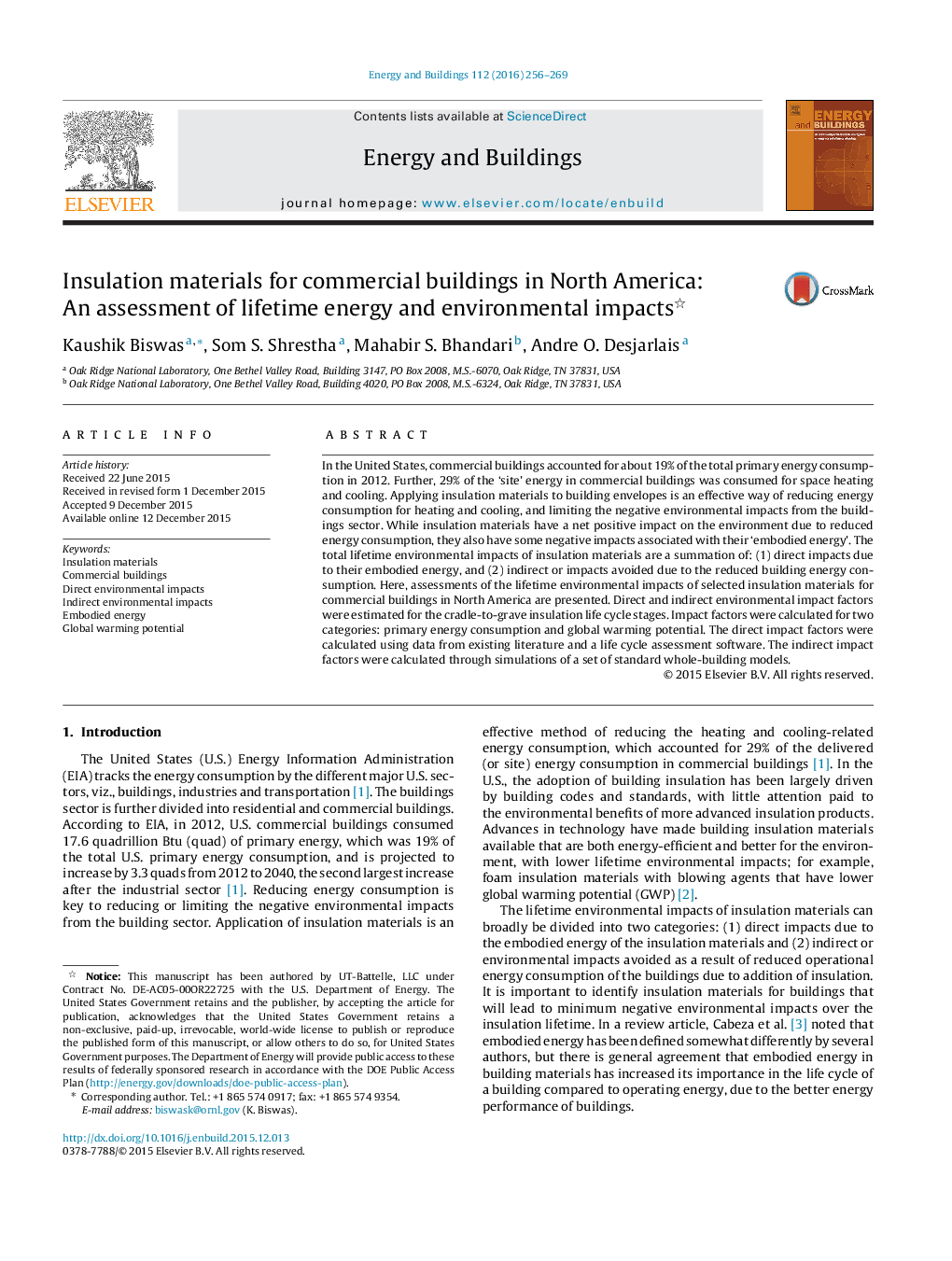| کد مقاله | کد نشریه | سال انتشار | مقاله انگلیسی | نسخه تمام متن |
|---|---|---|---|---|
| 6730757 | 504022 | 2016 | 14 صفحه PDF | دانلود رایگان |
عنوان انگلیسی مقاله ISI
Insulation materials for commercial buildings in North America: An assessment of lifetime energy and environmental impacts
ترجمه فارسی عنوان
مواد عایق برای ساختمان های تجاری در آمریکای شمالی: ارزیابی انرژی طول عمر و اثرات زیست محیطی
دانلود مقاله + سفارش ترجمه
دانلود مقاله ISI انگلیسی
رایگان برای ایرانیان
کلمات کلیدی
مواد عایق، ساختمان تجاری، اثرات مستقیم زیست محیطی، اثرات غیر مستقیم محیط زیست، انرژی پر شده پتانسیل گرم شدن کره زمین،
ترجمه چکیده
در ایالات متحده، ساختمان های تجاری حدود 19 درصد کل مصرف انرژی اولیه در سال 2012 را به خود اختصاص دادند. علاوه بر این، 29 درصد از انرژی "سایت" در ساختمان های تجاری برای گرم کردن و خنک سازی فضای مصرف شده بود. استفاده از مواد عایق برای ساخت پاکت یک راه موثر برای کاهش مصرف انرژی برای گرمایش و خنک کننده و محدود کردن اثرات منفی محیطی از بخش ساختمان است. در حالیکه مواد عایق تاثیر مثبت خالص بر محیط زیست را به دلیل کاهش مصرف انرژی دارند، آنها همچنین دارای تأثیرات منفی در ارتباط با انرژی تجدید شده خود هستند. اثرات زیست محیطی تمام مواد زیست محیطی در طول عمر یک جمع بندی است: (1) اثرات مستقیم به دلیل انرژی تجدید شده و (2) غیر مستقیم یا اثرات ناشی از کاهش مصرف انرژی ساختمان. در اینجا، ارزیابی اثرات زیست محیطی مواد زیست محیطی انتخاب شده برای ساختمان های تجاری در آمریکای شمالی ارائه شده است. فاکتورهای تاثیر مستقیم و غیرمستقیم برای مراحل چرخه عطف گهواره تا گوره برآورد شده است. فاکتورهای تاثیر گذاری برای دو دسته محاسبه شد: مصرف انرژی اولیه و پتانسیل گرم شدن زمین. عوامل تاثیر مستقیم با استفاده از داده های ادبیات موجود و نرم افزار ارزیابی چرخه عمر محاسبه شد. عوامل تأثیر غیر مستقیم از طریق شبیه سازی مجموعه ای از مدل های کل ساختمان استاندارد محاسبه شد.
موضوعات مرتبط
مهندسی و علوم پایه
مهندسی انرژی
انرژی های تجدید پذیر، توسعه پایدار و محیط زیست
چکیده انگلیسی
In the United States, commercial buildings accounted for about 19% of the total primary energy consumption in 2012. Further, 29% of the 'site' energy in commercial buildings was consumed for space heating and cooling. Applying insulation materials to building envelopes is an effective way of reducing energy consumption for heating and cooling, and limiting the negative environmental impacts from the buildings sector. While insulation materials have a net positive impact on the environment due to reduced energy consumption, they also have some negative impacts associated with their 'embodied energy'. The total lifetime environmental impacts of insulation materials are a summation of: (1) direct impacts due to their embodied energy, and (2) indirect or impacts avoided due to the reduced building energy consumption. Here, assessments of the lifetime environmental impacts of selected insulation materials for commercial buildings in North America are presented. Direct and indirect environmental impact factors were estimated for the cradle-to-grave insulation life cycle stages. Impact factors were calculated for two categories: primary energy consumption and global warming potential. The direct impact factors were calculated using data from existing literature and a life cycle assessment software. The indirect impact factors were calculated through simulations of a set of standard whole-building models.
ناشر
Database: Elsevier - ScienceDirect (ساینس دایرکت)
Journal: Energy and Buildings - Volume 112, 15 January 2016, Pages 256-269
Journal: Energy and Buildings - Volume 112, 15 January 2016, Pages 256-269
نویسندگان
Kaushik Biswas, Som S. Shrestha, Mahabir S. Bhandari, Andre O. Desjarlais,
